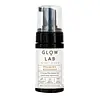What's inside
What's inside
 Benefits
Benefits

 Concerns
Concerns

 Ingredients Side-by-side
Ingredients Side-by-side

Ananas Sativus Fruit Juice
Skin ConditioningWater
Skin ConditioningCoco-Glucoside
CleansingGlycerin
HumectantBetaine
HumectantSorbitan Oleate Decylglucoside Crosspolymer
CleansingXanthan Gum
EmulsifyingGlyceryl Oleate
EmollientSodium Cocoyl Apple Amino Acids
Skin ConditioningSimmondsia Chinensis Seed Oil
EmollientCurcuma Longa Root Extract
MaskingCentella Asiatica Extract
CleansingAdansonia Digitata Seed Oil
EmollientOryza Sativa Extract
AbsorbentAcacia Senegal Gum
MaskingAlgin
MaskingCurcuma Longa Root Oil
PerfumingCananga Odorata Flower Oil
MaskingLavandula Angustifolia Flower Oil
MaskingCitrus Sinensis Peel Oil Expressed
PerfumingSodium Levulinate
Skin ConditioningSodium Anisate
AntimicrobialLeuconostoc/Radish Root Ferment Filtrate
AntimicrobialMaltodextrin
AbsorbentSodium Chloride
MaskingCitric Acid
BufferingAnanas Sativus Fruit Juice, Water, Coco-Glucoside, Glycerin, Betaine, Sorbitan Oleate Decylglucoside Crosspolymer, Xanthan Gum, Glyceryl Oleate, Sodium Cocoyl Apple Amino Acids, Simmondsia Chinensis Seed Oil, Curcuma Longa Root Extract, Centella Asiatica Extract, Adansonia Digitata Seed Oil, Oryza Sativa Extract, Acacia Senegal Gum, Algin, Curcuma Longa Root Oil, Cananga Odorata Flower Oil, Lavandula Angustifolia Flower Oil, Citrus Sinensis Peel Oil Expressed, Sodium Levulinate, Sodium Anisate, Leuconostoc/Radish Root Ferment Filtrate, Maltodextrin, Sodium Chloride, Citric Acid
Ingredients Explained
These ingredients are found in both products.
Ingredients higher up in an ingredient list are typically present in a larger amount.
Betaine is a common humectant (a substance that promotes retention of moisture). It's known to be gentle on the skin and can help balance hydration.
This ingredient is best for improving hydration and soothing irritated skin. Studies also show it helps even out skin tone.
Fun fact: Betaine is naturally created in the skin and body. The kind found within cosmetic products can be either plant-derived or synthetic.
Another name for betaine is trimethylglycine.
Learn more about BetaineCitric Acid is an alpha hydroxy acid (AHA) naturally found in citrus fruits like oranges, lemons, and limes.
Like other AHAs, citric acid can exfoliate skin by breaking down the bonds that hold dead skin cells together. This helps reveal smoother and brighter skin underneath.
However, this exfoliating effect only happens at high concentrations (20%) which can be hard to find in cosmetic products.
Due to this, citric acid is usually included in small amounts as a pH adjuster. This helps keep products slightly more acidic and compatible with skin's natural pH.
In skincare formulas, citric acid can:
While it can provide some skin benefits, research shows lactic acid and glycolic acid are generally more effective and less irritating exfoliants.
Most citric acid used in skincare today is made by fermenting sugars (usually from molasses). This synthetic version is identical to the natural citrus form but easier to stabilize and use in formulations.
Read more about some other popular AHA's here:
Learn more about Citric AcidCoco-Glucoside is a surfactant, or a cleansing ingredient. It is made from glucose and coconut oil.
Surfactants help gather dirt, oil, and other pollutants from your skin to be rinsed away.
This ingredient is considered gentle and non-comedogenic. However, it may still be irritating for some.
Learn more about Coco-GlucosideGlycerin is already naturally found in your skin. It helps moisturize and protect your skin.
A study from 2016 found glycerin to be more effective as a humectant than AHAs and hyaluronic acid.
As a humectant, it helps the skin stay hydrated by pulling moisture to your skin. The low molecular weight of glycerin allows it to pull moisture into the deeper layers of your skin.
Hydrated skin improves your skin barrier; Your skin barrier helps protect against irritants and bacteria.
Glycerin has also been found to have antimicrobial and antiviral properties. Due to these properties, glycerin is often used in wound and burn treatments.
In cosmetics, glycerin is usually derived from plants such as soybean or palm. However, it can also be sourced from animals, such as tallow or animal fat.
This ingredient is organic, colorless, odorless, and non-toxic.
Glycerin is the name for this ingredient in American English. British English uses Glycerol/Glycerine.
Learn more about GlycerinGlyceryl Oleate is the ester of glycerin and oleic acid. This ingredient is mainly an emollient and emulsifier.
Emollients soften and hydrate the skin by creating a thin film on top to trap in moisture. As an emulsifier, glyceryl oleate helps stabilize formulations by preventing ingredients such as oil and water from separating. According to a manufacturer, this ingredient helps helps thicken water-in-oil formulations, shower gels, and hair shampoos.
In some products, this ingredient may be used as a fragrance / perfuming ingredient. The scent of this ingredient is described to be "waxy".
Glyceryl oleate is created from oils rich in oleic acid, such as peanut oil and olive oil.
This ingredient may not be malassezia folliculitis safe.
Learn more about Glyceryl OleateWater. It's the most common cosmetic ingredient of all. You'll usually see it at the top of ingredient lists, meaning that it makes up the largest part of the product.
So why is it so popular? Water most often acts as a solvent - this means that it helps dissolve other ingredients into the formulation.
You'll also recognize water as that liquid we all need to stay alive. If you see this, drink a glass of water. Stay hydrated!
Learn more about Water